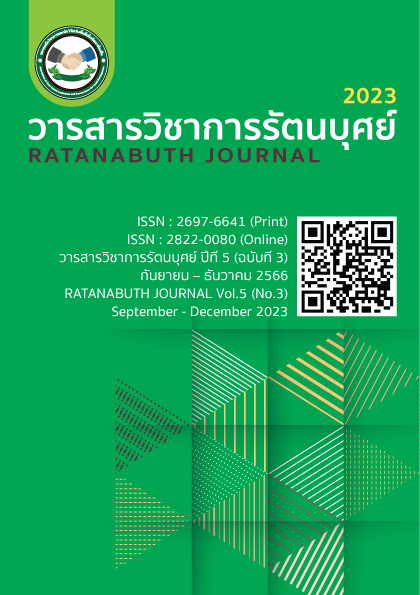Revolutionizing Efficiency: The Impact of Virtual Organizations on Transforming Management Dynamics Revolutionizing Efficiency: The Impact of Virtual Organizations on Transforming Management Dynamics
Main Article Content
Abstract
The concept of virtual organizations emerged in the 1990s as a solution to address challenges and leverage information technology. The paper discusses the revolutionizing efficiency and impact of virtual organizations on transforming management dynamics. Organizations need to adapt and plan for the future in order to respond to the rapid changes in the technological landscape. In the past,organizations relied on strategies such as monopolies to survive, but in the age of information technology, they need to be fast and responsive to meet customer demands. Virtual organizations are created through the collaboration of multiple organizations, leveraging information technology for efficient communication and convenience. These organizations require flexibility, responsiveness, and cost-effectiveness to thrive in the current business environment.
Article Details

This work is licensed under a Creative Commons Attribution-NonCommercial-NoDerivatives 4.0 International License.
References
เทพศักดิ์ บุณยรัตพันธุ์. (2553). องค์การเสมือนจริง (Virtual Organization). ออนไลน์. แหล่งที่มา : http://www.drmanage.com/index.php?lay=show&ac=article&Id=538632228
เรวัต แสงสุริยงค์. (2547). การบริการอิเล็กทรอนิกส์: ตัวแบบสำหรับการให้บริการสาธารณะของ ไทย.วิทยานิพนธ์หลักสูตรปริญญารัฐศาสตรดุษฏีบัณฑิต สาขาวิชารัฐศาสตร์, คณะรัฐศาสตร์:กรุงเทพฯ: จุฬาลงกรณ์มหาวิทยาลัย
รัตนาภรณ์ แววกระโทก. (2555). องค์การเสมือนจริง (Virtual Organization).สืบค้นเมื่อ 23 กันยายน 2566 จาก https://www.gotoknow.org/posts/451681.
Allen, T. D., Golden, T. D., & Shockley, K. M. (2015). How Effective Is Telecommuting? Assessing the Status of Our Scientific Findings. Psychological Science in the Public Interest, 16(2), 40–68. doi:10.1177/1529100615593273.
Anderson, R., & Moore, T. (2006). The Economics of Information Security. Science, 314(5799), 610–613. doi:10.1126/science.1130995.
Brynjolfsson, E., & McAfee, A. (2014). The Second Machine Age: Work, Progress, and Prosperity in a Time of Brilliant Technologies. W. W. Norton & Company.
Cabrera, A., Collins, W. C., & Salgado, J. F. (2006). Determinants of Individual Engagement in Knowledge Sharing. The International Journal of Human Resource Management, 17(2), 245–264. doi:10.1080/09585190500386642.
Carmeli, A., Gilat, G., & Waldman, D. A. (2007). The Role of Perceived Organizational Performance in Organizational Identification, Adjustment and Job Performance. Journal of Management Studies, 44(6), 972–992. doi:10.1111/j.1467-6486.2007.00723.x.
Choi, J. H., & Varian, H. (2012). Predicting the Present with Google Trends. Economic Record, 88(s1), 2–9. doi:10.1111/j.1475-4932.2012.00809.x
Daft, R. L., & Lengel, R. H. (1986). Organizational Information Requirements, Media Richness and Structural Design. Management Science, 32(5), 554–571. doi:10.1287/mnsc.32.5.554.
Davenport, T. H., & Ronanki, R. (2018). Artificial Intelligence for the Real World. Harvard Business Review, 96(1), 108–116.
Demirel, D. (2017). The instrumental use of information technology: the increasing importance of virtual organizations. International Conference on Science and Education, 8(8),93-102.
Dhillon, G., & Backhouse, J. (2001). Information System Security Management in the New Millennium. Communications of the ACM, 44(7), 125–128. doi:10.1145/379300.379332.
Etzioni, O., Etzioni, O., Etzioni, O., Etzioni, O., Etzioni, O., Etzioni, O., & Etzioni, O. (2017). AI for the Common Good: A Framework for Ethical AI. Communications of the ACM, 60(1), 34–37. doi:10.1145/2977602.2977611.
Fomenko, E.V., Luneva, T., & Nikitin, E.V. (2021). Role and functions of virtual organizations in context of COVID-19 pandemic. 2021(3):37-43. doi: 10.24143/2073-5537-2021-3-37-43.
Gibson, C. B., & Cohen, S. G. (2003). Virtual Teams that Work: Creating Conditions for Virtual Team Effectiveness. San Francisco: Jossey-Bass.
Hinds, P. J., & Mortensen, M. (2005). Understanding Conflict in Geographically Distributed Teams: The Moderating Effects of Shared Identity, Shared Context, and Spontaneous Communication. Organization Science, 16(3), 290–307. doi:10.1287/orsc.1050.0139.
Jackson, S. E., & Ruderman, M. (1999). Diversity in Work Teams: Research Paradigms for a Changing Workplace. American Psychologist, 54(4), 17–63. doi:10.1037/0003-066x.54.4.17.
Joslin, R., & Müller, R. (2015). Relationships between a Project Management Methodology and Project Success in Different Project Governance Contexts. International Journal of Project Management, 33(6), 1377–1392. doi:10.1016/j.ijproman.2015.02.002.
Kaur, R., & Chhikara, N. (2020). Applications of Virtual Reality and Augmented Reality in Enterprises. In R. Rautaray & A. Agrawal (Eds.), Emerging Technologies in Data Mining and Information Security,113–132) Springer. doi:10.1007/978-981-15-4990-3_7.
Leonardi, P. M., Huysman, M., & Steinfield, C. (2013). Enterprise Social Media: Definition, History, and Prospects for the Study of Social Technologies in Organizations. Journal of Computer-Mediated Communication, 19(1), 1–19. doi:10.1111/jcc4.12029.
Matsumoto, D. (2017). The Handbook of Culture and Psychology. Oxford University Press.
Milgram, P., & Kishino, F. (1994). A Taxonomy of Mixed Reality Visual Displays. IEICE Transactions on Information and Systems, E77-D(12), 1321–1329.
Mowshowitz, A. (2002). Virtual Organization. In Encyclopedia of Information Systems, (4),53–66. Elsevier.
Nah, F. F. H., & Lau, J. L. S. (2001). Critical Factors for Successful Implementation of Enterprise Systems. Business Process Management Journal, 7(3), 285–296. doi:10.1108/14637150110392773.
Powell, A., Piccoli, G., & Ives, B. (2004). Virtual Teams: A Review of Current Literature and Directions for Future Research. ACM SIGMIS Database, 35(1), 6–36. doi:10.1145/974491.974495.
Prema, J., & Loyd, B.L. (2015). Virtual Organization of Grid – Pipeline Virtual
Organization (PVO) Approach. International Journal of Computer Applications Technology and Research, 4(4):312-317. doi: 10.7753/IJCATR0404.1019.
Rasmussen, T., Ulrich, D., & Kaufman, S. (2011). Learning from Practice: How HR Connects the Dots between People and Performance. Organizational Dynamics, 40(4), 236–244. doi:10.1016/j.orgdyn.2011.06.005.
Rezazadeh, H., & Molaei, H. (2018). The relationship between the degree of organization's virtualization and the organizational ability. Management Science Letters, 8(6):619-630. doi: 10.5267/J.MSL.2018.4.029.
Schwalbe, K. (2018). Information Technology Project Management. Cengage Learning.
Stefan, H., & Fayzullin, R. (2020). The organizational concept of the virtual corporation and its integration into Industry, 4 5(3):132-137.
Swan, M. (2015). Blockchain: Blueprint for a New Economy. O'Reilly Media.
Tapscott, D., & Tapscott, A. (2016). Blockchain Revolution: How the Technology Behind Bitcoin and Other Cryptocurrencies is Changing the World. Penguin.


